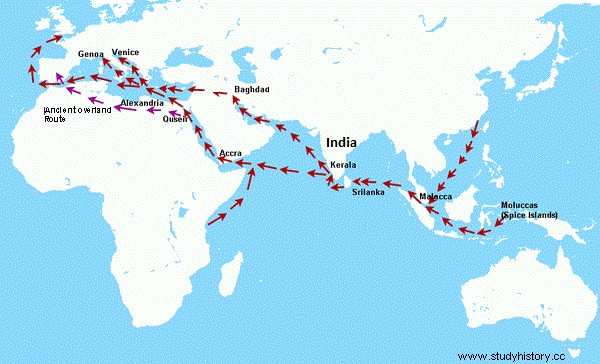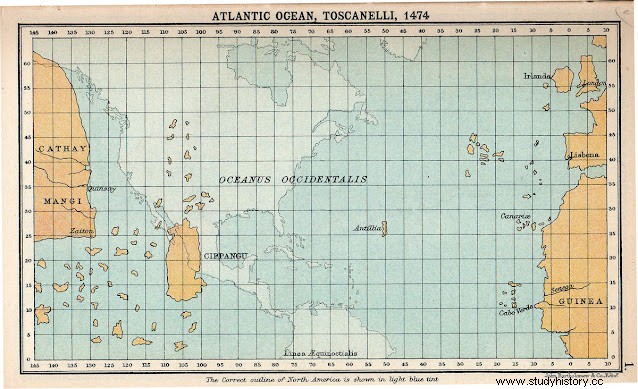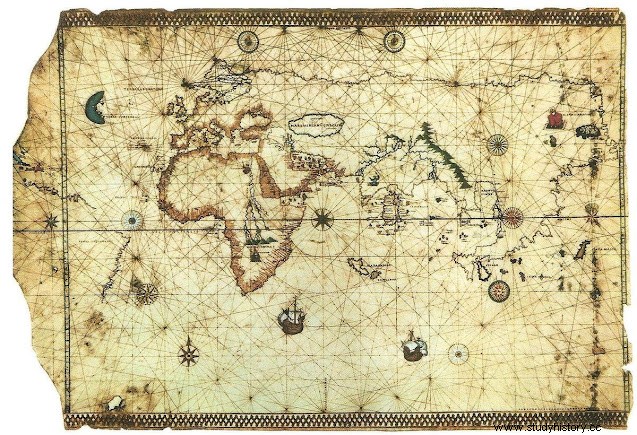 Spice Route
Spice Route After the Granada war, the Catholic Monarchs could pay attention to the project of reaching India by sailing west, since the Treaty of Alcaçovas prevented reaching India by skirting the African coast.
The project of Christopher Columbus, consisting of reaching India from the west, was first presented to the King of Portugal, who rejected him because of his erroneous calculations, since they assumed that the diameter of the earth was 30,000 kilometers when the reality is that it is 40,000. . Instead of 1,125 miles, the reality is 2,495 (Toscanelli Map) and for being immersed in the project of reaching Asia by circumnavigating Africa.
 Toscanelli Map
Toscanelli Map After the Portuguese refusal, he presented his project to the Catholic Monarchs, who, despite the contrary opinion of the experts, who confirmed Columbus' miscalculations, signed the Capitulations of Santa Fé. By this contract Columbus received the title of admiral, viceroy and governor of the discovered lands and would obtain 10% of the profits. The expedition, made up of the Pinta, the Niña and the Santa María, left the port of Palos on August 3, 1492, made a stopover in the Canary Islands and sighted land on October 12, 1492, arriving at the island of Guanahaní. It was in January 1493 and in April the Catholic Monarchs received him in Barcelona. The results of that expedition were disappointing, because they did not find what they were looking for and that did not look much like Marco Polo's descriptions, but they did see profitable products (tomato, corn, pearls...) and even the possibility of enslaving the Indians That same year, in the face of Portuguese protests, papal arbitration was sought and Pope Alexander VI published the Inter Caetera bulls where all the discovered lands that did not belong to a Christian prince were delivered to Castile from a meridian 100 leagues to the west of the Azores. The Portuguese refusal will lead to the signing in 1494 of the Treaty of Tordesillas where a meridian 370 leagues from the islands of Cape Verde will separate the two areas of influence:the west for Castile and the east for Portugal.

After the main trip, there will be three other trips where they will be discovered:on the Second Trip of Columbus the Greater Antilles (Puerto Rico, Jamaica), on the third trip the mouths of the Orinoco and Margarita Island and on the fourth trip Honduras and the American coasts looking for a passage to the south. After these trips, Columbus will die poor and forgotten in 1506 in Valladolid without knowing that he had discovered a new world.
From then on, the continent was systematically explored and colonized.
Taken from historiaymas
